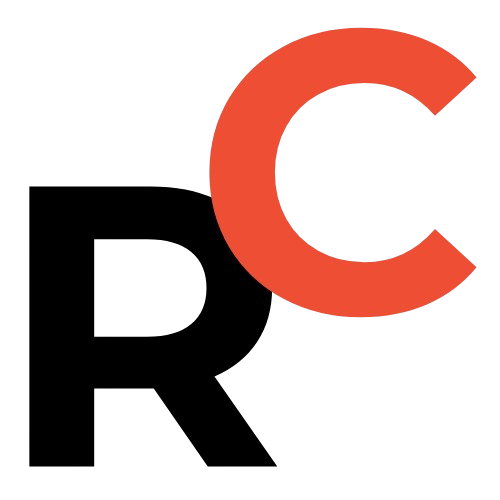Key Points
- Rule-based move: Multiple brokerages (e.g., 国融证券, 东方证券) set the haircut rate to zero for nine A-share names on 2025-10-09 under the exchange rule that triggers at a static P/E > 300x (a risk-control measure in place since 2016).
- Immediate market impact: Sharp moves included SMIC (中芯国际) H-share -6.7%, SMIC A-share -0.87% and 路桥信息 -17.24%, reflecting both direct loss of collateral value and forced repositioning by leveraged holders.
- Extreme valuations: Reported static P/E examples: 路桥信息 947x (very extreme), while 中芯国际 ≈303x and 佰维存储 ≈301x sat just above the 300x trigger.
- Investor implications & reversibility: Affected stocks cannot be used as collateral, risking margin shortfalls, margin calls and forced deleveraging; the action is reversible once static P/E falls below 300x (past restorations include 四方精创 and 机科股份).

haircut rates set to zero (折算率归零) hit nine A-share names on October 9, 2025.
What happened
On October 9, 2025, several Chinese brokerages confirmed they had set the financing-and-securities-lending collateral haircut rate (折算率) to zero for nine A-share stocks.
Brokerages that announced the adjustment include Guorong Securities (Guóróng Zhèngquàn 国融证券) and Orient Securities (Dōngfāng Zhèngquàn 东方证券).
The affected names include Semiconductor Manufacturing International Corporation (SMIC; Zhōngxīn Guójì 中芯国际), Baiwei Storage (Bǎiwéi Cúnchǔ 佰维存储), Luqiao Information (Lùqiáo Xìnxī 路桥信息) and six other A-share issuers.
The changes took effect October 9.

Resume Captain
Your AI Career Toolkit:
- AI Resume Optimization
- Custom Cover Letters
- LinkedIn Profile Boost
- Interview Question Prep
- Salary Negotiation Agent

Immediate market reaction
The market reacted quickly after the announcements.
SMIC’s H-share closed at HK$83.50 per share, down 6.7%.
SMIC’s A-share closed at ¥138.91 RMB (¥138.91 RMB ($19.03 USD)), down 0.87%.
Luqiao Information closed at ¥38.01 RMB (¥38.01 RMB ($5.21 USD)), down 17.24%.
Honghui Fruits & Vegetables (Hónghuī Guǒshū 宏辉果蔬) closed at ¥9.12 RMB (¥9.12 RMB ($1.25 USD)), down 2.46%.
For the H-share conversion, HK$83.50 ≈ ¥78.03 RMB ($10.69 USD) using an exchange estimate where HK$1 ≈ ¥0.934 and HK$1 ≈ $0.128.
(All currency conversions are approximate and shown to help international readers.)

Why brokerages set the haircut to zero
Brokerages said the move followed existing margin-trading rules set by the exchanges.
When a stock’s static price-to-earnings ratio (static P/E) exceeds 300x or is negative, its financing-and-securities-lending haircut rate should be adjusted to zero.
That rule appears in the exchanges’ margin-trading implementation regulations and has been applied as a risk-control measure since 2016.
In plain terms, a haircut (折算率) is the discount applied to the market value of a stock when that stock is used as collateral for margin financing.
A higher haircut rate lets investors count more of the stock’s value toward margin.
Setting the rate to zero means the stock temporarily cannot be used as collateral for financing, severely reducing its usefulness for leveraged positions.

Find Top Talent on China's Leading Networks
- Post Across China's Job Sites from $299 / role, or
- Hire Our Recruiting Pros from $799 / role
- Qualified Candidate Bundles
- Lower Hiring Costs by 80%+
- Expert Team Since 2014
Your First Job Post

Which stocks were affected — and how extreme were the valuations?
The nine A-shares named by brokerages included:
- Semiconductor Manufacturing International Corporation (SMIC; Zhōngxīn Guójì 中芯国际)
- Baiwei Storage (Bǎiwéi Cúnchǔ 佰维存储)
- Tianma Technology (Tiānmǎ Kējì 天马科技)
- Ruisheng Intelligent Technology (Ruìshèng Zhìnéng 瑞晟智能)
- Manenster (Mànēnsītè 曼恩斯特) — name transliterated
- Honghui Fruits & Vegetables (Hónghuī Guǒshū 宏辉果蔬)
- Yongding Co., Ltd. (Yǒngdǐng Gǔfèn 永鼎股份)
- Luqiao Information (Lùqiáo Xìnxī 路桥信息)
- Hakong Air Conditioning (Hākōng Tiáotiáo 哈空调) — name transliterated
Reported static P/E ratios for these stocks were well above the 300x threshold in many cases.
Luqiao Information’s static P/E was reported as high as 947x.
SMIC and Baiwei Storage were reported at roughly 303x and 301x respectively — just above the trigger line.

ExpatInvest China
Grow Your RMB in China:
- Invest Your RMB Locally
- Buy & Sell Online in CN¥
- No Lock-In Periods
- English Service & Data
- Start with Only ¥1,000

What this means for investors
Because these stocks no longer count as collateral for margin financing, investors who hold them in margin accounts will see their available collateral value fall.
That can trigger margin shortfalls, margin calls, forced deleveraging or the need to post cash or other eligible securities.
Broker disclosures warned that changes to haircut rates will change available margin balances and advised investors to pay attention to related risks.
Institutional and speculative funds that rely heavily on margin to lever positions in these names will be most directly affected.
The immediate selling pressure observed on affected tickers reflects both the direct impact of losing collateral value and the secondary panic or repositioning by leveraged participants.

Is this permanent?
No.
Brokerages emphasized this is a dynamic, rule-based risk-control step.
Once a stock’s static P/E drops below 300x (or otherwise meets the exchanges’ requirements), brokerages can restore a non-zero haircut rate.
The announcement cited past examples.
Sifang Jingchuang (Sìfāng Jīngchuàng 四方精创) and Jike Co., Ltd. (Jīkē Gǔfèn 机科股份) had their haircut rates restored after their static P/E fell under 300x.
Different brokerages restored different recovered rates — for example, some restored to 0.5 or 0.65, others to 0.3, depending on the broker’s own risk parameters.

Why the rule exists
The 300x P/E trigger is part of the exchanges’ margin-trading implementation rules across Shanghai, Shenzhen and Beijing.
It’s designed to limit leverage on extremely high-valuation or loss-making stocks,
where sharp price moves can cause outsized damage to leveraged positions and increase systemic risk.
The rule has been in place since 2016 and remains a foundational risk-control tool for financing-and-securities-lending business.

Practical, non-fluffy takeaways for investors and founders
If you hold affected names on margin:
-
Reassess your collateral composition immediately.
-
Prepare for potential margin calls and have a cash plan or eligible securities ready.
-
Consider de-risking if your tolerance for forced deleveraging is low.
If you’re a founder or operator watching market signaling:
-
Understand that exchange-level risk rules are mechanical and can change your investor base quickly.
-
High static P/E signals speculative positioning more than fundamentals — and it attracts rule-based interventions.
If you’re an investor or allocator:
-
Monitor static P/E before deploying margin-heavy strategies in A-shares and H-shares.
-
Factor exchange risk rules into stress tests and scenario planning.

Bottom line
Setting haircut rates to zero for certain high–or negative–P/E stocks is a standard, rules-based risk-control action.
It reduces leverage capacity for those names immediately and can create short-term selling pressure as margin users adjust positions.
The effect is reversible: haircuts can be restored if valuations return below the exchange thresholds.
Investors with significant margin exposure to the affected names should reassess collateral composition, prepare for potential margin calls, and consider de-risking if appropriate to their strategy and risk tolerance.
haircut rates set to zero (折算率归零) is a rule-based lever that can move markets fast — know the mechanism, and plan accordingly.




![China's Auto Price War Heats Up: Deep Discounts & New Launches Target May Day Shoppers [FreshFromChina]](https://freshfromchina.com/wp-content/uploads/2025/05/Chinas-Auto-Price-War-Heats-Up-Deep-Discounts-New-Launches-Target-May-Day-Shoppers-FreshFromChina-150x150.png)

